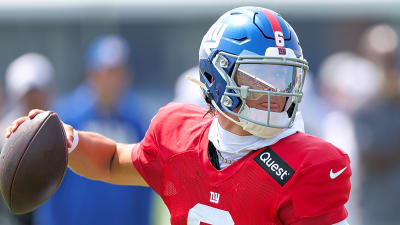
On June 6, the House vs. NCAA reached a settlement over name, image, and likeness (NIL) deals. One of the changes made was roster limits, and schools across the nation, including the USC Trojans, prepared.
Ahead of the ruling, programs cut their rosters, and Judge Claudia Wilken ordered a clause to protect athletes losing their spot as a result of the agreement. Designated student-athletes who were cut are eligible for a grandfather status at a new school.
Lincoln Riley’s Take On Roster Limitations
USC Trojans coach Lincoln Riley spoke to the media during fall camp and explained how the program can take advantage of the roster limits. The Trojans may not be able to take advantage of it this season, but perhaps next year.
“It’s unique how it’s being done,” Riley said. “It’s the, I don’t know if you say settlement, NCAA, whoever makes rules these days. They’ve gone with a more tapered approach where we’re not really feeling it this year. We’ll feel it a little bit more next year, and then each year, it’s going to work its way down to 105.”
“They’ve got these, we call them ‘Designated Survivors,’ but they’ve got these designated athletes that, as their eligibility runs out or if they transfer, then you don’t just lose the player. You lost that spot. It’ll cause everybody to eventually whittle down to 105, which will be an advantage for us,” Riley continued.
One of the reasons that Riley does not feel that USC has an advantage currently is due to the teams in the Big Ten. He cited the Nebraska Cornhuskers as a team that carries more players on the roster than USC does because of walk-ons.
“I mean, we’re playing teams that carry - and especially in this league, sometimes I don’t think people realize, carry 30 more players on their roster than we do. I mean, Nebraska easily carries 30 more guys on their roster. There’s Title IX and all types of things with it. It’ll be competitively good for us when it gets to that number, where the playing field’s a little bit more level.”
Why Roster Limit Is Changing
With the House vs. NCAA settlement, programs are allowed to pay their student athletes directly with an annual cap. The cap is beginning at roughly $20.5 million per school for the 2025-2026 season.
How the schools spread the money could vary. Some programs are looking to give up to 90 percent to their football team, while others have sports they will spread more money to, such as basketball.
With the cap, teams can only keep so many players on the roster, and creating a limit could keep it fairer. While players will still be grandfathered in, once those players are off the team, the spot will no longer be there.
“This new framework that enables schools to provide direct financial benefits to student-athletes and establishes clear and specific rules to regular third-party NIL agreements marks a huge step forward for college sports,” NCAA President Charlie Baker said in a letter after the settlement. “Together, we can use this new beginning to launch college sports into the future.”
The USC Trojans have been one of the most successful programs in the NIL era of college football. While the program may not feel the impact of the roster limitations yet, each season will even out the playing field until the Trojans are the ones with the advantage.
RECOMMENDED ARTICLES
More must-reads:
- Notre Dame believed to be trending toward surprise choice at quarterback
- Oregon suspends former five-star WR recruit indefinitely
- The '2023 NFL AP second-team All-Pro' quiz
Breaking News
Trending News
Customize Your Newsletter
 +
+
Get the latest news and rumors, customized to your favorite sports and teams. Emailed daily. Always free!








